Aggression in dogs is a serious behavioral condition owners face. However, the problem could be avoided if the owner is properly aware of dogs' life stages and the things that can lead to dog aggression.
One million cases of reported dog bites are recorded each year but it only accounts for half of the cases because the other half go unreported. Most wounds from dog bites are not threatening. Unfortunatly children are bitten most often.
Genes, heredity, and environment are major factors affecting dog aggression. Some breeds like Rottweilers and Akitas display belligerent behaviors while some breeds take softer roles like Retrievers.
Mating related dogs can result in inconsistent attitudes in dogs and hormones can influence aggression between dogs of the same and opposite sexes.
Another factor that contributes to behavioral aggression is environment. That includes the dog's state of living, socializing, excessive disciplining and unwarranted reinforcing from the owner etc.
Furthermore, dogs instinctly live in packs. They occupy high or low social status. They see the people around them as part of the pack and they protect their status in the social rank by attacking the passive members of the family such as children. If dogs growl in defense of their bowls and they are not disciplined, the owners are giving the dogs an unwanted opportunity to develop such aggressive behavior over one of the family members or all of the family members. With time and without proper intervention from the owners, the dogs will surely establish their dominance in the social rank which includes the members of the family. Such dominant behavior will show when the dogs start to bite every time they start to see and feel that humans are a threat to their high social rank in the pack". Such dogs often end up at shelters, because their owners had, in reality, misunderstood their social behavior such as attacking without any definite purpose.
Dogs may be aggressive because of fear, territory, other dogs (siblings, dogs of the same sex, and dogs of the opposite sex), medications, predation, possession, puppies, food, play, maternity, senility, and illness or injury. Dogs may show one or a combination of several kinds of aggression.
Socializing dogs during their first 12 weeks of their life is a critical factor which is important to prevent dog aggression. Three to 16 weeks are the critical stages in dogs' growth because it is during these times that they learn to trust or mistrust. During these periods, they should be taught how to interact socially. As puppies, dogs should be exposed to humans especially children because if not, they will grow uncomfortable with the presence of people.
Ensure your dogs' and children's safety. Children are bitten by dogs commonly in the face. Dogs reprimand their puppies by opening their mouths across the puppies' faces. Children love to hug and kiss dogs. Sometimes dogs get offended so as a result, they see children as offending puppies.
Teach positive behavior like self-control to your dog. For instance, train him to keep still while you are preparing their food.
Be mindful of what dogs learn everyday. Don't let them bark at people who pass by on bikes or to mailmen, repairmen, delivery people and strangers. Do not leave your dogs unattended while fettered out of the house. Take dogs inside of the house for the night.
Choose solid fence over underground electronic fence.
You also need to neuter your dogs.

 City Slickers: 5 Tips for Urban Living with Cats & Dogs
City Slickers: 5 Tips for Urban Living with Cats & Dogs
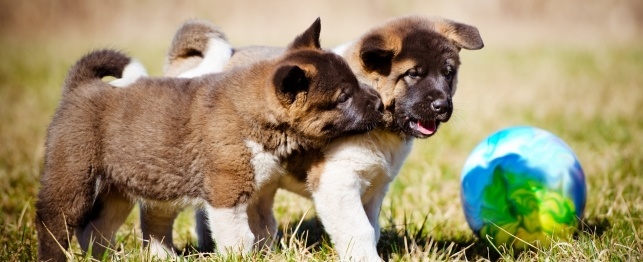 Doggie Play Dates: Are They for Your Dog?
Doggie Play Dates: Are They for Your Dog?
 Dog Games - Try Puppy Push-Ups
Dog Games - Try Puppy Push-Ups
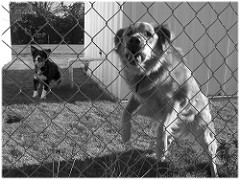 Stop Dog Barking: The Real Approach To Train Your New Family Dog.
Stop Dog Barking: The Real Approach To Train Your New Family Dog.
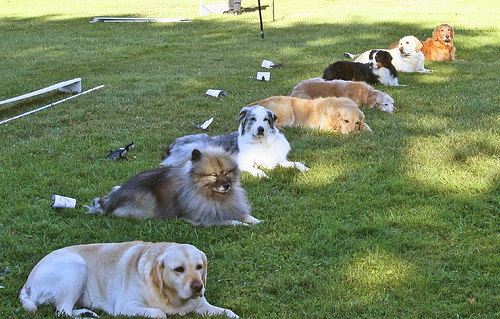 Canine Manners 101: Teaching your dog the basics of the 揝tay?Command
Canine Manners 101: Teaching your dog the basics of the 揝tay?Command
 The Fabulous Muffin Tin Game for Dogs
The Fabulous Muffin Tin Game for Dogs
 NILIF Behavioral Shaping For Dogs
Why You Should Consider NILIF
Do you have a stubborn, pushy
NILIF Behavioral Shaping For Dogs
Why You Should Consider NILIF
Do you have a stubborn, pushy
 Dog Games - Try Puppy Push-Ups
Dog Games - Try Puppy Push-Ups
Dog Games - Try Puppy Push-Ups
Dog Games - Try Puppy Push-Ups
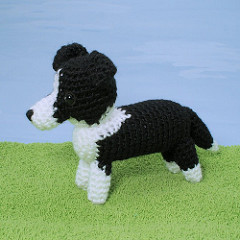 Train Your Border Collie Dog With These Helpful Hints
The day your new puppy comes home with you will be filled
Train Your Border Collie Dog With These Helpful Hints
The day your new puppy comes home with you will be filled
 Doggie Day Care
Doggie Day Care
Doggie Day Care
Doggie Day Care
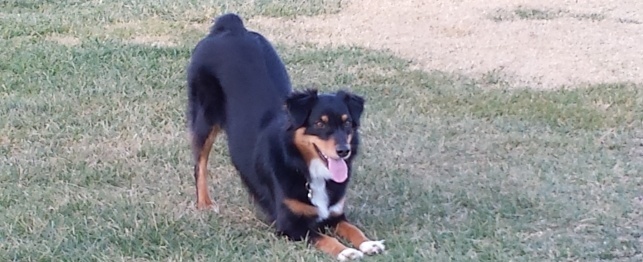 Playing Charades with Your Dog
Playing Charades with Your Dog
Playing Charades with Your Dog
Playing Charades with Your Dog